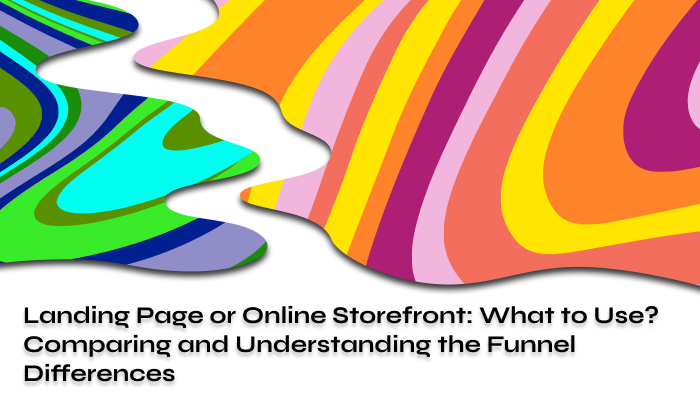Breadcrumbs work on multiple fronts simultaneously: improving user behavior factors, enhancing website usability, and overall benefiting the resource. We explain what breadcrumbs are, the different types available, and how to work with them.

What are breadcrumbs and why are they needed
Breadcrumbs are an important element of web design and navigation, used to enhance the user experience when visiting websites. They represent a navigational structure that allows users to easily move between sections and pages of the site. Breadcrumbs got their name from the legendary tale of Hansel and Gretel, where children left breadcrumbs on the path to avoid getting lost.

The primary function of breadcrumbs is to provide users with information about their current position on the website and enable navigation to all parent sections that led them to the current page. This is especially useful on websites with a deep hierarchical structure, where users can easily become disoriented or lost. Breadcrumbs offer a simple way for them to return to previous levels of sections or go back to the homepage.
Speaking of website creation, do you know what websites are worth creating right now? It differs from time to time, that is why we wrote an article on this topic. Check it out!
Thus, breadcrumbs not only provide more convenient navigation for users but also increase user satisfaction and the utility of the website. They also impact search engine optimization, as search engines can use breadcrumbs to determine the page hierarchy and its relationship to other pages on the site.
Types of breadcrumbs
Breadcrumbs are an integral part of web design for many websites and can take various forms and styles depending on the developer’s needs and preferences. Let’s look at some of them:
1. Linear breadcrumbs: This is the most common type of breadcrumbs, representing a sequence of links to pages or sections. They reflect the hierarchy of sections and allow users to easily track their location and navigate the site.

2. Dynamic breadcrumbs: Unlike linear ones, dynamic breadcrumbs change based on the context and user actions. They can provide additional links to related pages or relevant information, making navigation easier and improving the user experience.

3. Dropdown breadcrumbs: This type allows users to access different sections or subsections of the site through a dropdown menu. With such breadcrumbs, users can quickly switch between different levels of hierarchy without needing to return to previous pages.

4. “Back” button duplication: It’s quite common to include a “back” button alongside breadcrumbs. This allows users to choose how they want to return to the previous page—either using breadcrumbs or the browser’s “back” button. This duplication provides more flexible navigation and caters to different user preferences.

How to work with breadcrumbs
Breadcrumbs are most often located at the top of the screen as a horizontal row. It’s important to maintain this format and place breadcrumbs on all pages of the website. They are not a replacement for the main menu, so it’s necessary to include the main menu on every page.
The design of breadcrumbs should match the overall style of the website and use the same fonts as the page content. They should complement the content and not distract visitors. Various symbols such as “>”, “/”, “—”, or arrows are used to separate links in breadcrumbs to ensure that the text doesn’t merge, and users don’t get confused.
Tips for working with breadcrumbs:
- Proper placement and consistent format: Place breadcrumbs on all necessary pages and stick to a consistent format and location to avoid confusing users.
- Add a menu: Breadcrumbs do not replace the menu, so don’t forget to include this important navigation tool on every page.
- Style and design: The design of breadcrumb elements should align with your website’s overall style and use the same fonts as the page. They should complement the content and not draw unnecessary attention.
- Separators: Use separators such as symbols like “>”, “/”, “—”, or arrows to distinguish links in breadcrumbs, preventing text merging and user confusion.
- Display all intermediate pages: To avoid confusing users, every intermediate page should be displayed in breadcrumbs. The user’s current location can be shown as the last element, but without a backlink to it.
- Highlight the current page: Highlight the last breadcrumb element that represents the current page, so users can easily identify their location. This element should be distinguishable from the others and not clickable.
- Place breadcrumbs on all pages of a specific type: If you’ve decided to use breadcrumbs, make sure to place them on every page of a specific type to ensure consistency and usability.
For example, Amazon uses breadcrumbs to display the user’s location within the structure of product categories and subcategories. Wikipedia uses breadcrumbs to show the hierarchy of an article within its category structure.
Advantages of breadcrumbs
- Improving user experience and navigation convenience. One of the significant advantages of breadcrumbs is the enhancement of user interaction with a website. Thanks to breadcrumbs, users have a quick and intuitive way to navigate the site. They can easily determine whether they are on the right page and how to return to the previous one or navigate to a specific section of the site.
- Reducing unnecessary clicks and time. With the help of breadcrumbs, website visitors don’t need to go through multiple pages or menus to return to a previous level or access another section. They can directly select the desired section from the breadcrumbs, reducing the number of clicks and time spent navigating the site.
- Assisting visitors in understanding the site’s structure. Breadcrumbs serve as a visual guide to orient users within the site and its hierarchy. They help users better understand how the site’s sections and pages are interconnected and how they can move between them. Thus, breadcrumbs help visitors orient themselves on the site more quickly and efficiently, facilitating access to the information they need.
- Improving SEO and site indexing. The interconnection of pages and sections on the site displayed by breadcrumbs allows search engines to more effectively index and understand the web resource’s structure. This, in turn, contributes to improved SEO and helps the site rank higher in search results. Therefore, the use of breadcrumbs can be considered an effective tool for enhancing a site’s visibility in search engines and attracting more organic traffic.
Drawbacks of breadcrumps
- Breadcrumbs may not be necessary for very small websites with a simple structure and little navigation depth. In these cases, adding breadcrumbs may result in visual overload without providing significant value for users.
- Breadcrumbs take up space on the website, which can be problematic on small screens or in mobile-responsive designs, where space is limited. In such situations, prioritizing other navigation elements or content may be more beneficial.
- The implementation of breadcrumbs can add complexity to the website design and development process, especially if the site has a dynamic or very deep structure. This complexity could lead to maintenance problems or conflicts with other design elements.
- Although breadcrumbs can improve the user experience, their impact on SEO is relatively limited. Depending exclusively on breadcrumbs as an SEO strategy, without focusing on other important ranking factors, it may not generate significant benefits.
Conclusion
Breadcrumbs provide enhancements to user experience, navigation convenience, and understanding of a site’s structure. Thanks to breadcrumbs, users can navigate the site more easily, quickly switch between sections, and return to previous pages without unnecessary clicks. Additionally, breadcrumbs contribute to improved SEO and site indexing by search engines.












